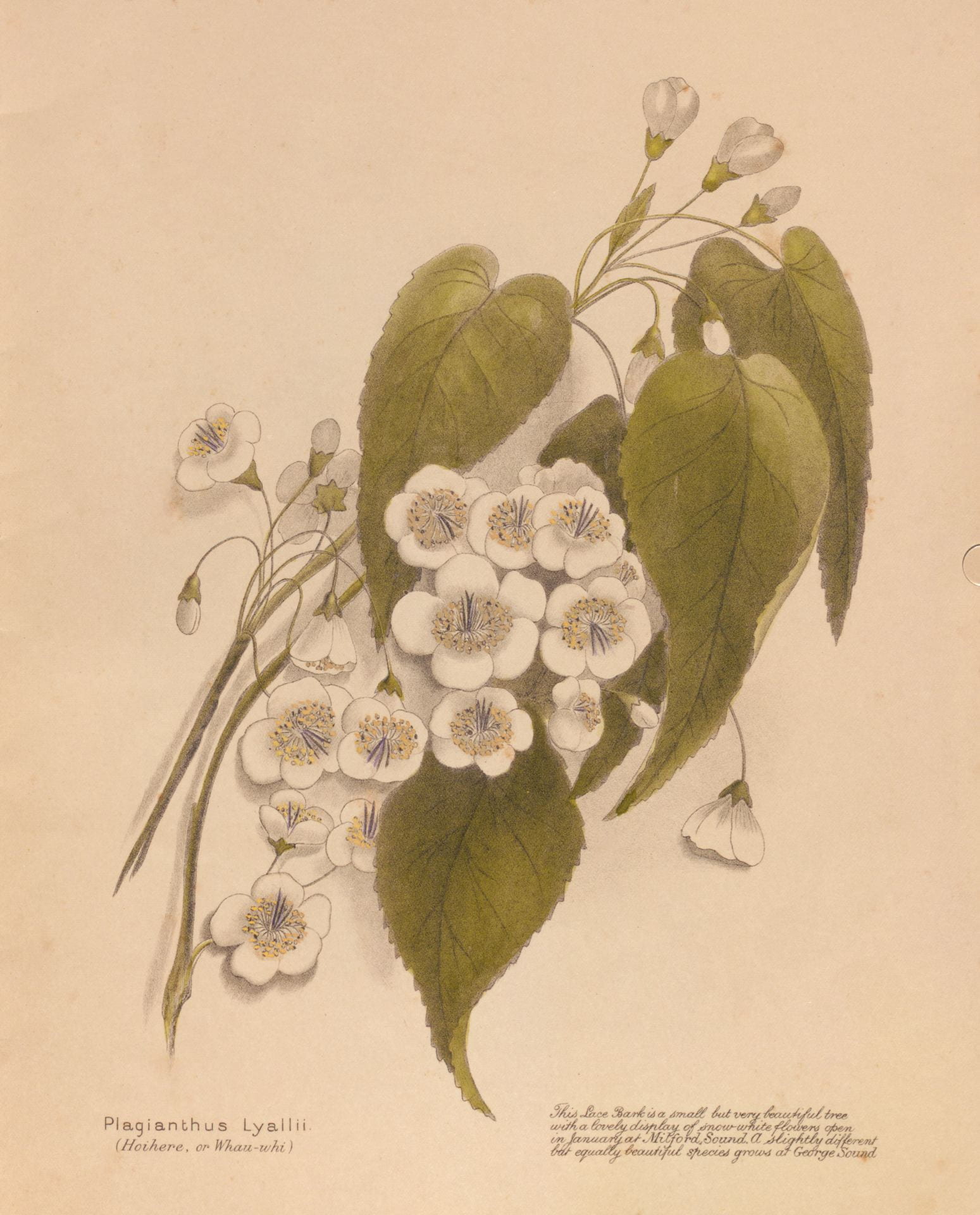The Union Steamship company offered special excursion tickets to Melbourne at reduced prices during the International Exhibition of 1880-81. We don’t know which boat Emily Harris took to Melbourne but it is safe to say that she would have been travelling saloon class and paying the 16 pounds that gave her the option of a return passage by Milford Sound on the Fiordland coast of the South Island. She must have spent Christmas in Melbourne, perhaps with her Nelson neighbour Mrs Levien and child who were also on SS Te Anau when it departed Melbourne for New Zealand and the West Coast Sounds 28 December 1880. Did Emily have time to pick up the carte de visite portrait (see the sidebar) she ordered from Stewart & Co, Photographers, in Bourke Street or was it sent on to Nelson after her departure? Did she renew acquaintance with friends from her days in Hobart? Melbourne was crowded with visitors, many of them like Emily taking advantage of discount trans-Tasman fares. ‘The New Zealand Court continues to be well attended by visitors,’ wrote a New Zealand Herald correspondent 4 December 1880, ‘and the book which lays open for the insertion of the names and Melbourne addresses of visitors from that colony has so many pages already filled as to render the skimming through even a formidable task. A New Zealander with an hour to dispose of has but to look in at the Court to be sure of meeting acquaintances or friends who will occupy all his spare time.’
By design or coincidence Te Anau was packed with artists as it steamed towards Fiordland. The Honorable James Crowe Richmond and his family party of nine were completing the final leg of their return to New Zealand from Europe where the young Richmonds were being educated. JC Richmond and his sister Maria Atkinson were Taranaki acquaintances from before the war, now resident in Nelson. James was also a landscape painter and a good friend of artist John Gully. His daughter Dorothy Kate Richmond, 19, was already a promising artist and the Richmond girls were coming home in full bohemian rig. Frances Porter in Born to New Zealand: A Biography of Jane Maria Atkinson notes the mixture of scorn and bemusement their appearance caused one conservative onlooker en route for Suez and Ceylon:
Also returning to New Zealand by the Suez route were the successful Wellington merchant, Walter Turnbull (father of Alexander Horsburgh), and his daughter Isabella. On 26 November [1880], at three in the morning, passengers and mail from Brindisi arrived on board the steamer Kaiser-i-Hind; the noise and bustle was considerable and, to Turnbull’s annoyance, prevented him from sleeping.
This morning I made up to and had a long talk with J.C. Richmond tho’ he and his family are studiously keeping aloof from the other passengers. His daughters are very plain looking and are dressed in a most extraordinary fashion quite aesthetic, loose robes with tippets and girdles round the waist, with hair cut short, in other words perfect guys; their cousins the Atkinsons are not quite so outre in their apparel. (324)
Fortunately for Turnbull Senior, another vessel was scheduled to convey him and his daughter to New Zealand after their stopover in Ceylon, and the alternative dress of the young women bothered him no further.
Te Anau pulled up in Milford Sound at 6 am on 2 January 1881 and passengers had several hours in which to go ashore or observe bush and mountains from the comfort of the ship. Other excursion trips to the West Coast Sounds report that sketching, shooting and fishing were some of the activities indulged in by those who came to the remote Sound already famous for its scenic splendour. At 1 pm Te Anau weighed anchor and steamed to George Sound, arriving at 4 pm and leaving at 7.30, again allowing passengers the chance to go ashore and explore. Strong southerly winds hampered the ship’s passage to Bluff, where she arrived at 1.30 pm on 3 January to disembark some passengers while others rambled over the steep hill Motupōhue, behind the port that gives the town its European name. A small watercolour by Emily, now at the Turnbull Library, is titled ‘Celmisia longifolia (Bluff, 1881).’ Port Chalmers lay ahead of the excursionists, then Lyttelton where they were transferred to The Union Company steamer Rotorua to continue their northward journey. Judge William Richmond met his brother and sister and their children when the Rotorua docked in Wellington 7 January. He too noted the unusual costume of his nieces and wrote to his wife that they might have walked out of one of Walter Crane’s books: ‘Dolla [Dorothy] has certainly a beautiful face — very beautiful — and is most picturesque in appearance altogether.’ Emily and her fellow Nelsonians went on to reach home by the regular Cook Strait service.
The excursion to Milford Sound stayed a long time with Emily Harris. Her first illustration for New Zealand Mountain Flora features Mount Cook Lilies in bloom against the backdrop of Mitre Peak. Three watercolours now at Turnbull depict the native lacebark or houhere, and one of them (the largest, on deep green paper) is inscribed ‘Milford Sound.’ But it is the lithograph of houhere in New Zealand Flowers that reveals what Emily did with her precious time above the shoreline of the fiords in 1881. The text for Plate 10, written in the artist’s copperplate hand, reads: “Plagianthus Lyallii. (Hoihere, or Whau-whi). This Lace Bark is a small but very beautiful tree with a lovely display of snow-white flowers open in January at Milford Sound. A slightly different but equally beautiful species grows at George Sound.”

Lead writer: Michele Leggott
Research support: Makyla Curtis, Betty Davis